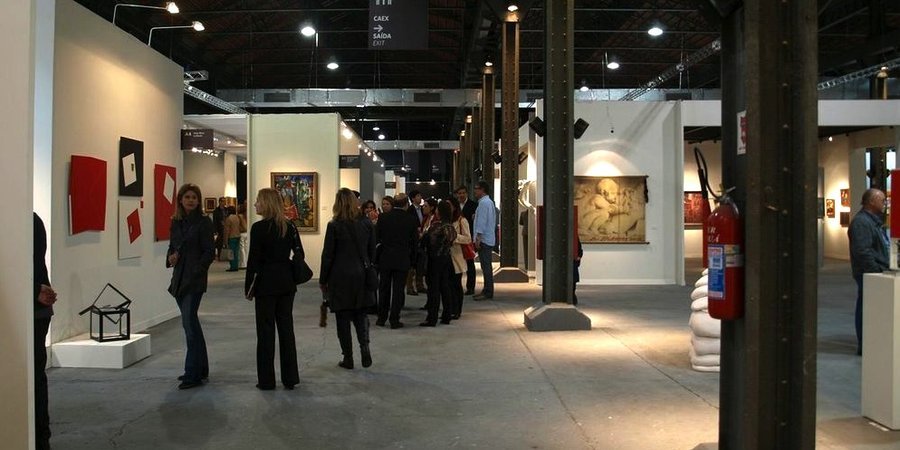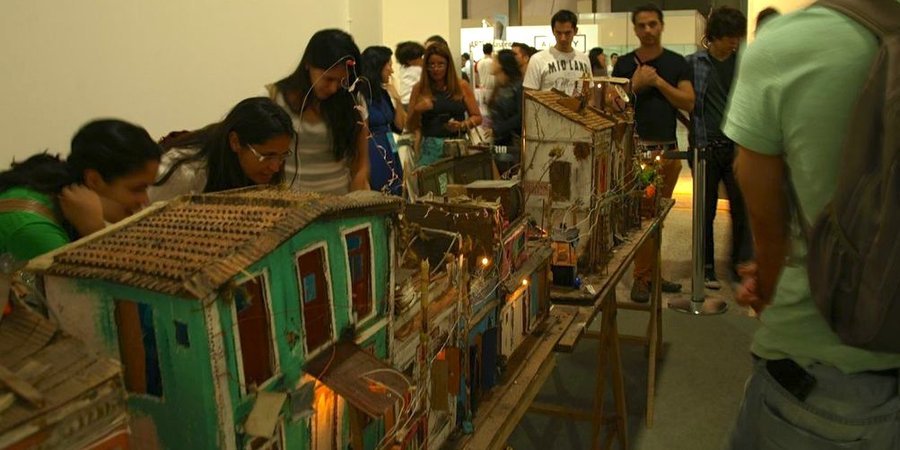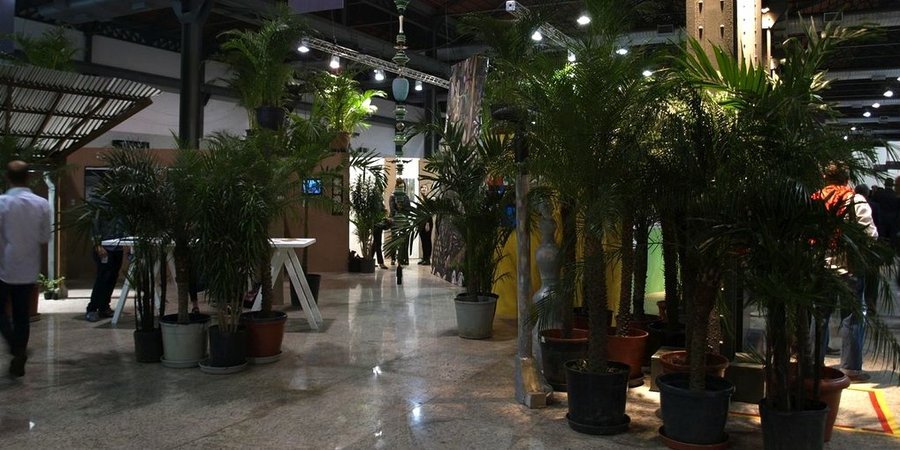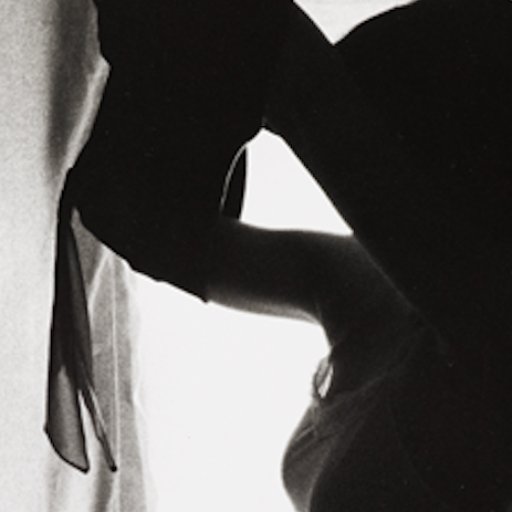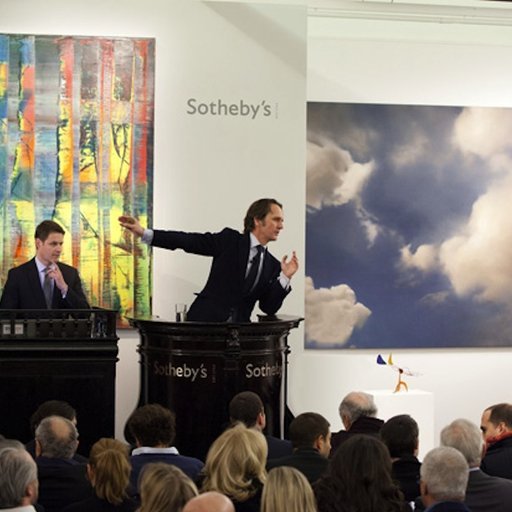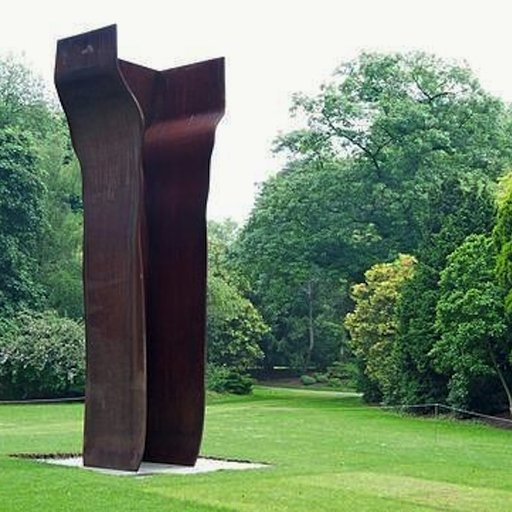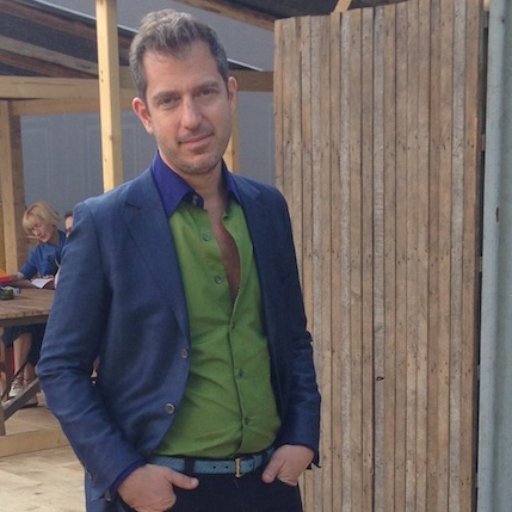After a week of glorious sun and warm temperatures in Copacabana, it was a little bit sad to arrive off of the shuttle bus in Rio last Wednesday to find rain and thick clouds casting a shadow over the opening of ArtRio on the piers. And when it rains in Rio, it is serious. It means no Corcovado, no Christ, no Sugarloaf, no surfers.
But there was a big upside: Rio's cultural world, still unknown to many travelers, seems to be getting stronger every year, with a growing number of museums, galleries, artist studios, collections, cultural centers, and, of course, the third year of the ArtRio fair.
The venue at the Pier Mauá is aesthetically perfect, but strategically a little bit off due to construction and heavy traffic. The fair itself is described as still under development, and there certainly were kinks to work out: the temperature in the halls was arctic, for one thing, especially for anyone whose clothes were dampened by rain, and there seemed to be a lack of coordination between the fair and museums in order to extend the opening hours during the event. The most unfortunate issue was the timing of the fair, which coincided with the Jewish holidays and Brazil's Independence Day, on September 7. Everybody was leaving the city and military parades and protests filled the streets around the fair. But every fair needs time to overcome its weaknesses.
ArtRio was divided into two sections and four halls of modern and contemporary art. During the VIP opening in the morning, the halls were quite empty but filled up in the afternoon when “cariocas”—Rio de Janeiro residents—left their offices.
The Brazilian presence was very strong, mostly with galleries from Rio de Janeiro, São Paulo, Belo Horizonte, and Curitiba bringing national artists. The Rio de Janeiro gallery A Gentil Carioca (owned by Ernesto Neto and Marcio Botner) brought artists like OPAVIVARÁ, Rodrigo Torres, and Thiago Rocha Pitta. But my favorite was José Bento, represented with two large-scale wooden sculptures that originated in Benin. The gallery also held an outstanding street party to celebrate their tenth anniversary and the opening of their new space in Centro on Friday, which attracted thousands of guests dancing to live music.
Elsewhere at the fair, New York's Pace Gallery opted for a one-man show of big sculptures by Alexander Calder, and it was said that they had sold one of them for around $8.7 million on the first day. London dealer Victoria Miro had installed an eye-catching installation by Yayoi Kusama alongside works by Adriana Varejão and others. Gagosian, meanwhile, opted for large works by John Chamberlain, Damien Hirst, and a huge list of renown international artists.
White Cube went a minimal route, presenting mostly work by Donald Judd, Dan Flavin, John McCracken, and Sarah Morris. And there were plenty of representatives from Germany on hand, such as Crone, Société, Koal, and psm, who brought a lot of large-scale paintings and sculpture. From Peru, Livia Benavides showed works on paper, while Honduras's Adán Vallecillo, Lima and Berlin's David Zink Yi, and Luz María Bedoya were happy to have sold some works to the Museu de Arte do Rio and private collectors.
My favorite was Gallery Nosco from London and New York, which presented an incredibly courageous new installation every day from artists Rodrigo Bueno (Brazil), Lauren Seiden (USA), Camilla Emson (UK), Tulío Pinto & Gabiel Netto (Brazil), and Sergio Cezar (Brazil). It was outstanding work, particularly the installations by the São Paulo-based Bueno, who created living furniture that allowed nature to overtake manmade objects transforming them into rhizomatic and organic creatures, and Sergio Cezar, who brought his interpretation of Rio's favelas to the fair: a large-scale sculpture with detailed, dollhouse-like models. The work attracted thousands of viewers on Sunday and was an incredible juxtaposition of the reality of Rio reality with the glamorous life of the art world.
Pablo León de la Barra and Julieta González curated the solo project “Vision of Paradise: The Savage Mind,” which aimed to show the “overwhelming presence of nature in tropical modernist discourse." The selection of works was interesting, particularly the small-scale drawings by Hélio Melo, a self-taught artist and a rubber worker in the Amazonian forests, who reflected on local realities by using materials derived during the production of the rubber.
The opening saw a range of visitors from Carioca society, including Oskar Metsava, owner of the fashion line Osklen, and Sergio Mauricio Martins, the editor of Santa Fine Art, Rio's best art publication. Plus there were U.S. collectors from Los Angeles and Houston, representatives of European institutions, international curators like de la Barra, ArtBA director Julia Converti, and Eungie Joo, the new curator at Brazil's Inhotim art center.
Vik Muniz, now more Rio- than New York-based, stayed quite long at the opening, which was relaxed, colorful, but perhaps not as crowded as expected. But everybody enjoyed Rio, of course, and the VIP guided tour led the visitors to exhibitions of Cristina Iglesias, to the Museu de Arte Moderno, and the Museu do Açude in the Tijuca hills.
In general, I would have liked to see booths that better reflected the Brazilian context. But the atmosphere was amazingly positive, the venue outstanding, the people open-minded, warm, and respectful. Rio de Janeiro is as beautiful and multifaceted as ever, and the fair is worth a trip. I will definitely be back next year.











